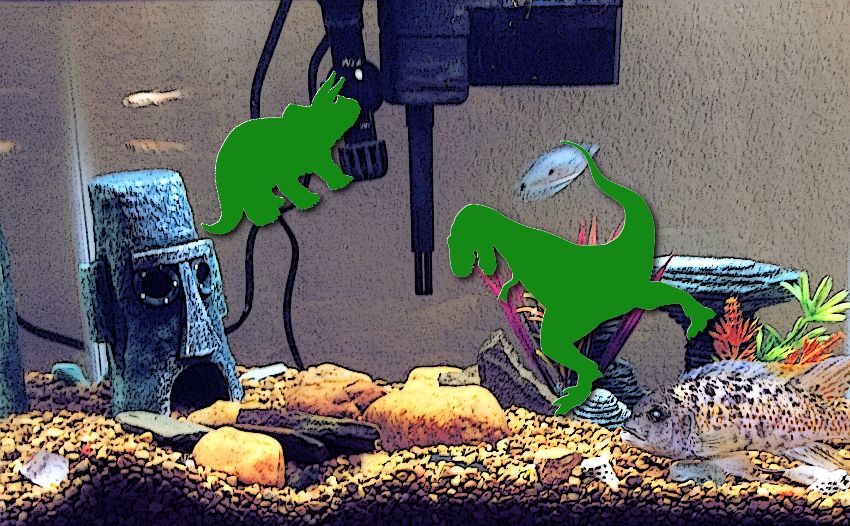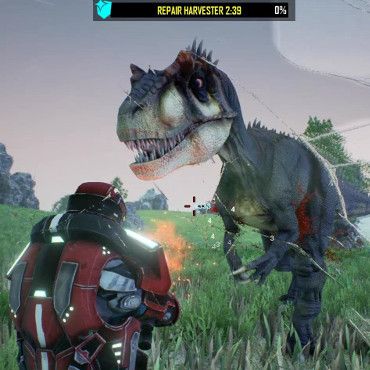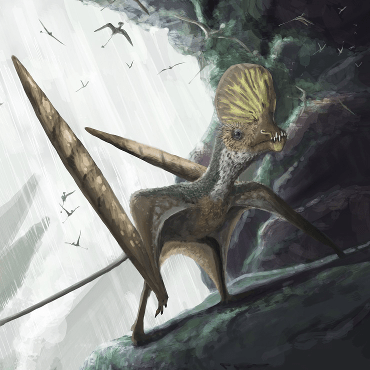
Beginner’s Guide To Dinosaur Aquariums
Decorating your home with dinosaurs can be challenging. You don’t want something that sticks out like a sore thumb. A really subtle way to decorate your home with dinosaurs is a fully themed aquarium. This is one of those things that you can go as crazy with as you like, and get more elaborate with over time. Below are the steps to bring your dream dino-aquarium to life, only limited by your money and imagination! I’ve had a guest author with loads of experience write this article. He will cover the steps on how to start your own tank, some recommendations, and the maintenance it all requires! As always, clicking through links does provide a commission, so thank you for any support.
The Startup
Popular starter tanks range from 5-20 gallons. This article is going to shoot for a 10 gallon tank because they are readily available from Amazon to Walmart. First, you’ll need to buy your supplies for the tank. You can hit a specialty aquarium store locally, a general pet store like Petsmart or Petco, or even a Walmart because they have everything. There are two ways you can go about putting together your dinosaur aquarium. You can buy complete setups that are “all in one” packages for an easier time, and makes searching for the supplies a lot easier. Alternately you can buy everything individually if you so wish, and it will give you a few more options for customization.
Complete Setup Kits
Aquarium setup kits are pretty straightforward. These are a great way to go for beginners, and for those less interested in picking and choosing things individually. These can range from $60 to $100 or more. You can also buy smaller setups in the 2 to 5 gallon range if you want something different. These have the obvious benefit of being smaller, and able to be put anywhere, as well as more interesting shapes for the aquarium itself.
[columns] [span4]
[/span4][span4]
[/span4][span4]
[/span4][/columns]
Customized Setup Builds
If you go the individual route, then you’ll need to measure the tank to get a hood that fits it (preferably with a light). You’ll also want a filter for a 10 gallon tank (supplies for the filter will most likely be in the package ,or the package will tell you the needed supplies), a water heater, and maybe a water pump for flow if your fish desire it. Here’s where it starts to get more interesting and fun. First, you’ll want to pick your substrate (ground, bottom, etc, but is optional because some fish don’t need it) for your tank. Let it be small, easy to move pebbles (my favorite, a lot of fish like it), colored (can look good depending on what you put in your tank). It’s your tank and you can choose what you wish.
More Information on Substrate/Gravel
Some fish like to move gravel and lay in gravel. For beginners, I recommend small gravel because a lot of fish and invertebrates like it, it’s easy to take care of, and it looks nice. Some fish also don’t need gravel, like some discus, cichlids, arowana, and overall free swimming fish that spend no time on the ground. Some eels like to burrow or lay in a lot of substrate, so you may want to buy more or less substrate depending on what stock you’re wanting. It’s best to have a plan for your stock so you know what to get and do. Substrate is also necessary for preventing large rocks from scraping the floor of your aquarium. There are many different types of substrates which are good and useful, but I’d recommend most aquarists to at least try to do small gravel in their first tank so they have an idea of the maintenance substrate requires as well as how useful/beneficial it actually is.
Dinosaur Decor
Then, comes decorating it. I’d recommend easy to clean decorations with a color which isn’t green so you can spot algae easier, but again, you can do what you want. Maybe like a small cave structure, or rock structures, and some fake plants (some real plants too, but I’d not recommend it for beginners). Tons of fish love to hide and be by themselves for a little bit, and having decorations like what I recommended can help your fish live happier, longer lives. There are some great dinosaur aquarium backgrounds for the outside of your tank to add a tad more authenticity to your dinosaur habitat!
[columns] [span4]
[/span4][span4]
[/span4][span4]
[/span4][/columns]
Some Assembly Required
You’ll need to identify and assemble all parts to your aquarium, and put them all together. Cords should be above the water and usually a single outlet would need a power strip to add more outlets for all your plugs. Heaters usually go beside the filter, and the filter usually is partly in the tank, and partly out of the tank. Just follow the directions to set it up. The lid will go over-top, and be sure not to leave the light on 24/7 because algae will grow faster plus you’ll need to replace it more. Usually about 8-12 hours, depending on how long you’re awake, when you come home, when you go to sleep, and your type of fish. Fill the water up to an inch off the surface, and to let the heater do its work (figuring that your heater is either automatic or that you set it to the right temperature [76-82 degrees F].
The Waiting Game
Ideally you’d want to let your tank sit for a day to get the temperature right. You can put your fish in after 20 hours-ish. If you’re housing expensive, picky fish (I’d not recommend it for your first time), then let it sit for 2 weeks to a month to let it cycle. A filter usually has a cycle that takes 2 weeks to a month that makes the filter used to taking water and biomass. Either it can have a carbon cycle (from having no fish) or a bio cycle (from having fish in it). The bio cycle can crash if you’re not doing the maintenance required or if you overstocked your aquarium. Sometimes people will let their tank sit for a month just to be safe, which is still good but not the fastest way to get it going if you’re excited about the aquarium.
Just Add Wildlife
So you’ve set up the heater, lid, filter, decorations, substrate, and let the water sit for a while (everything is also turned on), then you’re ready to stock you’re aquarium. Always look up fish and their information before buying them, don’t just buy them out of nowhere just because of looks or you have that itch. Fish could either be too dirty, too picky, too invasive, or too big. If you’re just beginning, a small clean up crew will be needed for an aquarium. Some clean up crew members can be bristle nose plecos, shrimps, snails, and some species of other fish that will eat algae or excess food like a blue crayfish (although these can be aggressive).
There are two ways you can stock your dinosaur themed aquarium. You can fill it up with just any fish, or you can stock your dinosaur themed aquarium with animals that were around when dinosaurs walked the Earth! I’ve done some research to find out which fish/inverts had ancestors that lived alongside dinosaurs. There are other fish with roots in the dinosaur era, it just takes a little extra research to find them.
- Gouramis come from the order of fish Perciformes, which first appeared during the late Cretacious period.
- Shrimp can date back even earlier than the dinosaurs, though some developed during the same time as well.
- Cichilids also come from the order of fish Perciformes, which first appeared during the later Cretaceous.
- Snails also have ancestors dating back before the dinosaurs.
- Tetras are from the order of fish known as Characiformes, which formed during the early Cretaceous.

To give some ideas, here’s some ideas I’ve come up with for stockings that lived alongside dinosaurs:
Tyrannosaur Trio
- 2-3 dwarf gouramis (any species, however some can be territorial or slightly more aggressive during mating season)
- 2-3 shrimp (doesn’t matter either, they can clean tanks)
- 2 snails (preferably nerite or mystery, others can be invasive)
Brachiosaurus Bundle
- 6-8 Cardinal tetras
- 2 shrimp
- 2 snails
Triceratops Triple
- 1 cockatoo cichlid
- 2 snails
- 3 shrimp
I personally recommend dwarf gouramis, shrimp, snails, or there are even a couple species of dwarf cichlid that could arguably live fine in a 10 gallon aquarium like cockatoos, Rams, etc. NOTICE I didn’t put goldfish or guppies in this. Guppies typically last for a week or month, if not they can be dirty. Goldfish are typically big, and need a bigger tanks as well as a high class filter because of how filthy they can be.
Maintenance
Finally, we have maintenance for the tank. Filters need a rinse for the cartridges and/or sponges every month, about 1 minute to clean each with some clean water. Every once in a while the cartridge won’t really filter well, then you’ll need to replace it. I’d recommend to have replacements on hand at all times. Water conditioner is needed, depending on what type, on each water change. I’d recommend a 25% water change each week, a total of 25%, can be changed at any amount at any time as long as it’s that much all totaled up. A siphon is practically required for the water changes, and it cleans your substrate of dirt or excess food.
Do’s and Don’ts for Beginning Fish Keepers
Let’s start with the Do’s:
- Wash gravel or substrate before adding it to the aquarium: You’ll need to rinse your gravel or substrate with water (if you’re using sand, you will need to do it a more complex way, or the second way) by using your typical sifter and running warm water (NEVER Use any sort of soap, bleach, or chemical cleaning products for cleaning substrate) over it for cleaning because they can contain bad chemicals or just unwanted dust. You can skip this if either you your substrate is packaged already washed, or you can let the gravel sit in your aquarium (with water) a week before you add fish, and doing bi-daily water changes of up to 20%.
- Research: I cannot stress enough for the need for research in anything, let it be substrate, fish, decorations, filters, heaters, or etc. You’ll need research for about your entire career because it gives you insight and an idea of what you’re getting yourself into. It can save you the hassle of accidentally crashing your aquarium, wasting money, or killing fish.
- Rinse your decorations in water before adding them: Decorations could contain potentially lethal gasses in them which can be eliminated with a little rinsing before adding them to the aquarium.
- Clean tank: Without using any sort of chemicals or anything, try to wipe algae off of any surfaces on your aquarium biweekly to monthly, it just makes it better for your fish. Use a siphon to suck up any waste off the gravel so your ammonia, pH, nitrites, and nitrates stay relatively fine. I’d recommend doing it biweekly to monthly. Rinse your filter every month,let it be a sponge or a cartridge, about 1-2 minutes each time with any temperature of water.
- Quarantine fish: While this won’t be a possibility for new fish keepers, later on you may need to do it. Every time you buy a new fish, later on (preferably when you have 2-3 tanks) you’ll need to quarantine them to check their health, aggression, and keep any diseases they may have tracked in a away from other fish. Should be quarantined for about 1 week to a month, depending on fish, how bad a disease, how many diseases, and how healthy.
Now, the Don’ts:
- DON’T buy fish at random: Buying fish at random with little to no research can usually lead to accidental death of the fish, or maybe an unstable environment for it, let it be the fish may need more space, different food, different tank mates, and etc.
- DON’T wash anything with bleach, detergent, soap, or really any cleaning chemicals: It can harm you’re fish, doesn’t how long you let your tank sit. The chemicals from whatever you washed could potentially kill your fish.
- DON’T forget about your tank: Forgetting about tanks happens a lot, it can lead to potential harm to fish due to little to no maintenance and cleanings. You need to always remember and keep your tank in mind or within your daily schedule, don’t put it off to the side and forget about it.
- DON’T over feed, over apply, and etc: If you overdose your fish with something, they’re going to die, doesn’t matter what. If you overfeed them, they can either raise your nitrates and lower your pH (can kill fish) or raise ammonia with amount of food or nitrites. If you do too many water changes, your tank will never be chemically or naturally stable. Keep everything controlled and reasonable to what you have.
- DON’T leave your tank light on: Leaving your tank light on can make your fish restless. They need a time where they can sleep in the dark, otherwise they’ll tire out and die. Another reason is that it supports faster algae growth, so you’ll have more to clean. 8-12 hours a day for the light is best suited, but it can be altered with different schedules.
- DON’T give up: In my opinion, fish keeping is fun and interesting. You can’t give up so easily, sometimes things don’t work out or bad luck can happen. You may be missing out on the best hobby ever!
More information can be looked up and seen in extra detail. Overall, if you follow these basic steps, you should be able to run your own aquarium with relative ease and start your dream hobby today!



